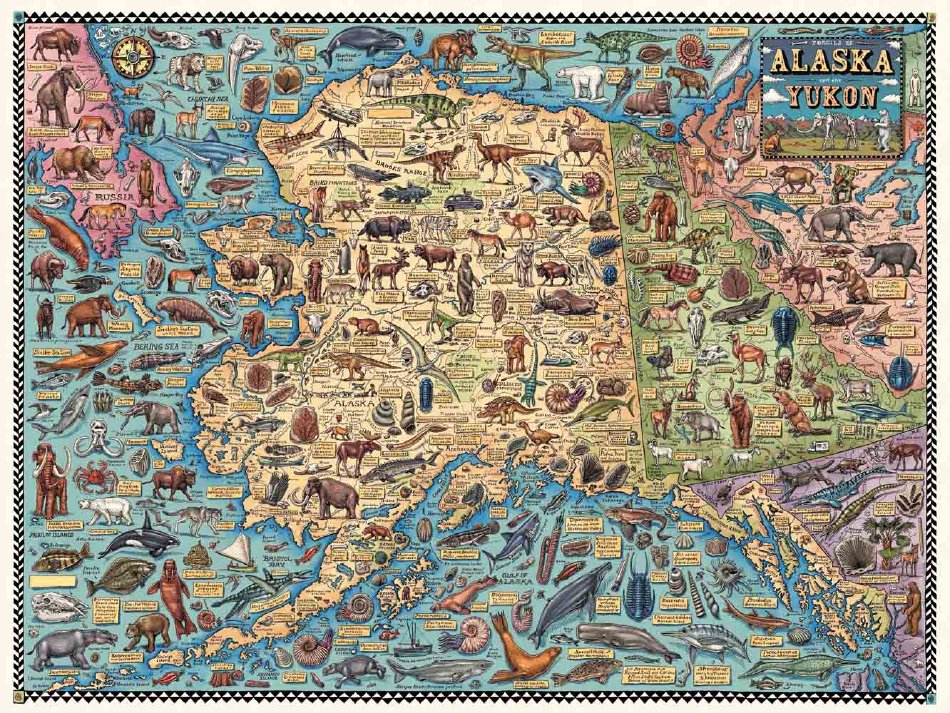Cruisin' the Fossil Coastline
The Great Alaska Terrane Wreck
The west coast of North America has been a coastline for an incredibly long time (nearly a billion years), which is why Kirk Johnson likes to call it the "eternal coastline." It is impressive for any geologic feature to endure for so long.
By contrast, the rocks that lay below the Pacific Ocean are on the move. They are part of a huge portion of the Earth's crust known as the Pacific Plate. At 40 million square miles, it is the largest geologic feature on our planet, acting like a sheet of steel being pushed into a blast furnace. In places like the Aleutian Islands, Washington, and Oregon, the Pacific Plate is slowly ground under the edge of North America, where it melts and causes earthquakes and volcanoes.
In other places like Southeast Alaska and British Columbia, the Pacific Plate carried small continents, called terranes, as it moved toward North America. As the terranes collided with North America, they remained at the surface, rather than sinking below the continent. In this way, North America is literally growing wider by adding little continents to its western edge.
Numerous terranes have "docked" with Alaska through time, creating a giant geologic jigsaw puzzle. Geologists refer to this rocky mess as "the great Alaska terrane wreck."
By contrast, the rocks that lay below the Pacific Ocean are on the move. They are part of a huge portion of the Earth's crust known as the Pacific Plate. At 40 million square miles, it is the largest geologic feature on our planet, acting like a sheet of steel being pushed into a blast furnace. In places like the Aleutian Islands, Washington, and Oregon, the Pacific Plate is slowly ground under the edge of North America, where it melts and causes earthquakes and volcanoes.
In other places like Southeast Alaska and British Columbia, the Pacific Plate carried small continents, called terranes, as it moved toward North America. As the terranes collided with North America, they remained at the surface, rather than sinking below the continent. In this way, North America is literally growing wider by adding little continents to its western edge.
Numerous terranes have "docked" with Alaska through time, creating a giant geologic jigsaw puzzle. Geologists refer to this rocky mess as "the great Alaska terrane wreck."


